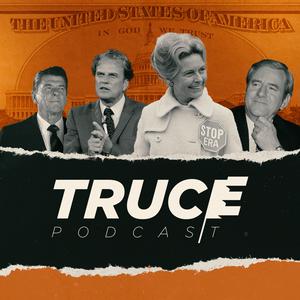Republicans and Evangelicals | Bob Jones University v. The United States
Give to help Chris continue to make Truce
Bob Jones University v. United States (1983) was a landmark U.S. Supreme Court case that addressed whether the Internal Revenue Service (IRS) could deny tax-exempt status to private religious schools that practiced racially discriminatory policies. Bob Jones University, a fundamentalist Christian institution, prohibited interracial dating and marriage among its students based on its religious beliefs. In 1970, the IRS revised its policy to deny tax-exempt status to private schools with racially discriminatory admissions policies, prompting Bob Jones University to file suit after losing its exemption.
The university argued that the IRS's actions violated its First Amendment rights to free exercise of religion. The central question for the Court was whether the government's interest in eradicating racial discrimination in education outweighed the burden on religious freedom imposed by the denial of tax-exempt status. The case thus pitted two core constitutional principles against each other: religious liberty and the government's interest in promoting equality.
In an 8–1 decision, the Supreme Court upheld the IRS’s position. Chief Justice Warren Burger, writing for the majority, stated that tax-exempt status is a form of government subsidy and that organizations seeking this benefit must serve a public interest. The Court held that eliminating racial discrimination in education was a "fundamental, overriding interest" that justified the burden on the university’s religious practices. It emphasized that the government is not required to subsidize discriminatory behavior, even when it is religiously motivated.
The ruling had significant implications. It clarified that tax-exempt status is conditional upon compliance with fundamental public policy, including civil rights laws. The decision reinforced the principle that religious freedom, while protected, does not allow institutions to violate core public values when receiving government benefits. This case remains a key precedent in balancing religious liberty with broader societal interests in equality and nondiscrimination.
Sources:
The Story of Bob Jones University v. United States: Race, Religion, and Congress's Extraordinary Acquiescence by Olati Johnson. Paper Number 10-229.
God's Own Party by Daniel K Williams
https://supreme.justia.com/cases/federal/us/461/574/#tab-opinion-1955051
1980s Republican Party Platform
In Search of Another Country by Joseph Crespino
McNamar's testimony, pp.225, Hearing Before the Committee on Finance, United States Senate, Ninety-Seventh Congress, Second Session, February 1, 1982. (Thanks to the Senate Historian's Office)
“The Bob Jones Decision: A Dangerous Precedent” by Kenneth S. Kantzer. September 2, 1983, issue of Christianity Today.
Randall Balmer article for Politico that narrows the blame for the bonding of evangelicals to the GOP to race
Before the Storm by Rick Perlstein
Majority opinion in the Bob Jones case
New York Times article in which Bob Jones assails the Supreme Court (page A23), May 25, 1983 “Bob Jones, in Sermon, Assails Supreme Court”
Discussion Questions:
Why is the tax exemption so important to this story?
Why is it important to churches and religious institutions?
How would revoking the tax exemption change giving to those institutions?
Some evangelicals (like CT) denounced the racism of BJU, but still thought the IRS overstepped its bounds. What do you think?
Which institutions in the US should be tax-exempt? Which shouldn't?
Learn more about your ad choices. Visit podcastchoices.com/adchoices


